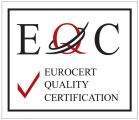2014/35/EU – CE-Certification for electrical equipments
The EU Directive on electrical equipment (the “Low Voltage Directive”) aims to ensure that only electrical equipment that provides a high level of protection for health and safety while also guaranteeing the functioning of the internal market is placed on the market.
The scope of the Low Voltage Directive includes electrical equipment intended for use at a nominal voltage
- between 50 and 1000 V for alternating current, and
- between 75 and 1500 V for direct current.
Products with lower nominal voltages are subject to the General Product Safety Directive.
A few exceptions for equipment and areas are listed in Annex II of the directive (e.g., electrical parts of passenger and goods lifts, electrical equipment intended for use in explosive atmospheres)
Goals and Implementation of CE Marking
The Low Voltage Directive serves the purpose of ensuring a high level of protection with regard to the health and safety of individuals, domestic animals, property, and goods for electrical devices and, at the same time, guaranteeing the functioning of the European internal market.
Most radio equipment (radio transmitters and receivers) covered by the Radio Equipment Directive 2014/53/EU does not directly fall within the scope of the Low Voltage Directive. Instead, the Radio Equipment Directive requires compliance with the “Essential Requirements” of the Low Voltage Directive but without applying the voltage limits, which corresponds to a stricter normative application of the Low Voltage Directive.
Like all European directives, the primary objective of the directive is to enable the free movement of goods. This is evident from Article 4, which states: “Member States may not hinder the placing on the market of electrical equipment that complies with this Directive concerning aspects covered by this Directive.”
2014/35/EU – CE-Certification for electrical equipments
The EU Directive on electrical equipment (the “Low Voltage Directive”) aims to ensure that only electrical equipment that provides a high level of protection for health and safety while also guaranteeing the functioning of the internal market is placed on the market.
The scope of the Low Voltage Directive includes electrical equipment intended for use at a nominal voltage
- between 50 and 1000 V for alternating current, and
- between 75 and 1500 V for direct current.
Products with lower nominal voltages are subject to the General Product Safety Directive.
A few exceptions for equipment and areas are listed in Annex II of the directive (e.g., electrical parts of passenger and goods lifts, electrical equipment intended for use in explosive atmospheres)
Goals and Implementation of CE Marking
The Low Voltage Directive serves the purpose of ensuring a high level of protection with regard to the health and safety of individuals, domestic animals, property, and goods for electrical devices and, at the same time, guaranteeing the functioning of the European internal market.
Most radio equipment (radio transmitters and receivers) covered by the Radio Equipment Directive 2014/53/EU does not directly fall within the scope of the Low Voltage Directive. Instead, the Radio Equipment Directive requires compliance with the “Essential Requirements” of the Low Voltage Directive but without applying the voltage limits, which corresponds to a stricter normative application of the Low Voltage Directive.
Like all European directives, the primary objective of the directive is to enable the free movement of goods. This is evident from Article 4, which states: “Member States may not hinder the placing on the market of electrical equipment that complies with this Directive concerning aspects covered by this Directive.”


